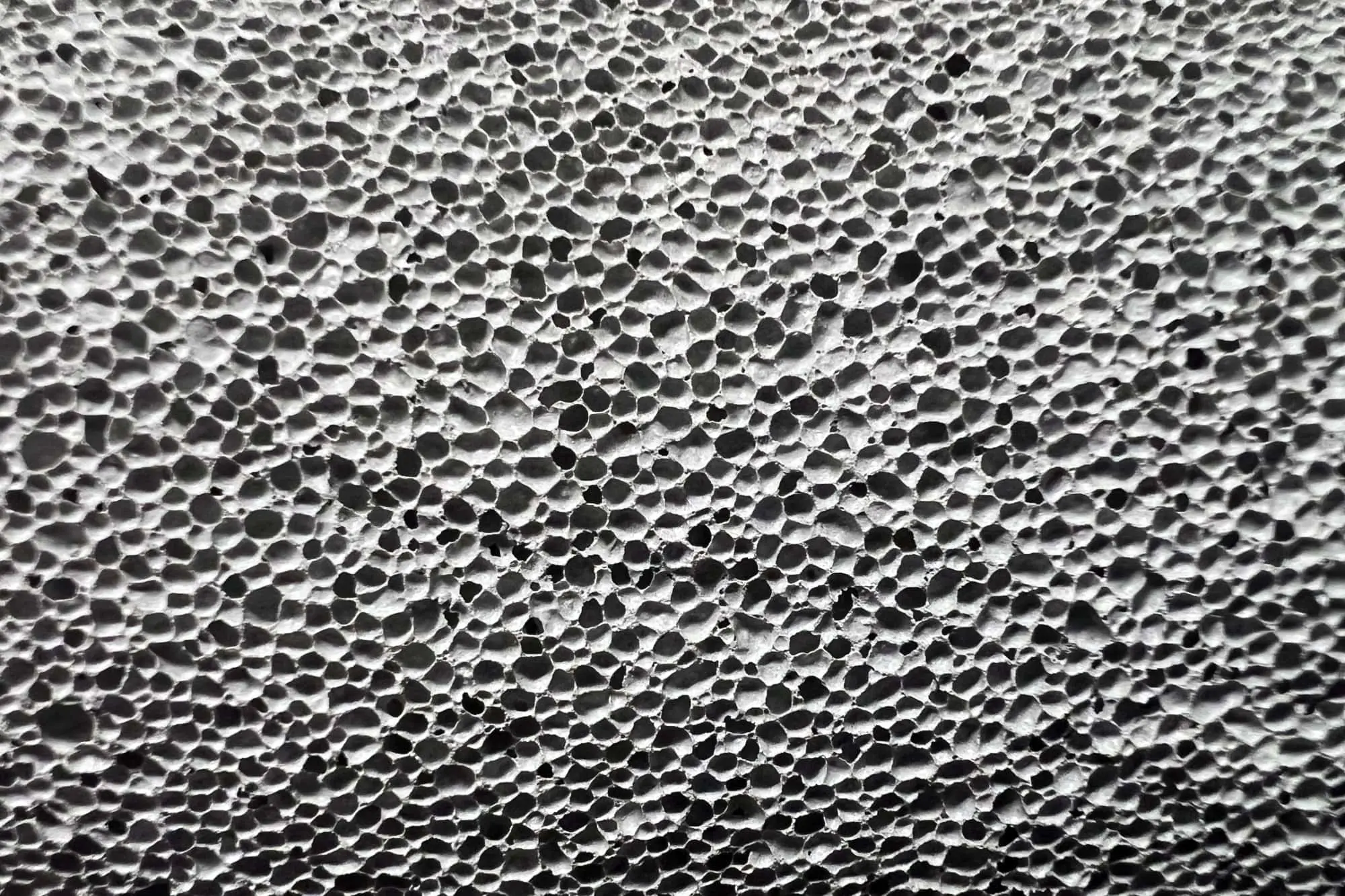
What is Lightweight Cellular Concrete (LCC)?
- Home
- What is Lightweight Cellular Concrete (LCC)?
What is Lightweight Cellular Concrete?
Lightweight cellular concrete is a highly versatile material known for its low density, high strength, and excellent thermal insulation. If you’ve glanced at the graphic above, you might think you're looking at a Jackson Pollock painting but those mesmerizing patterns are a zoomed-in view of cured lightweight cellular concrete. The intricate network of tiny air bubbles isn’t just art; it’s engineering genius. This cellular structure, created by blending cement, water, and a foaming agent, significantly reduces the material's weight while maintaining its structural integrity. This makes lightweight cellular concrete ideal for a wide range of construction and geotechnical applications, offering beauty in its design and brilliance in its functionality.
How is Lightweight Cellular Concrete Made?
Lightweight cellular concrete is produced by blending cement, water, and a foaming agent to form a lightweight, flowable material with a cellular structure. The air bubbles distributed throughout the mixture reduce its density without compromising its essential concrete-like properties. This makes lightweight cellular concrete easy to pump and place, even in complex or irregular voids.
Benefits of Lightweight Cellular Concrete
- Lightweight cellular concrete is significantly lighter than traditional concrete, reducing the load on underlying structures. It is ideal for applications like plaza fills, roadway embankments, and roofing systems where weight savings are essential.
- The material offers excellent compressive strength, allowing it to support substantial loads without compromising stability. It performs particularly well as a stabilizing or insulating layer beneath foundations, though it is not typically used as a primary load-bearing material.
- The cellular structure provides exceptional thermal insulation, helping to regulate temperature fluctuations and prevent issues like frost heave. This is especially beneficial in cold climates.
- Its reduced weight enhances seismic performance, minimizing the forces acting on structures during earthquakes.
- Lightweight cellular concrete offers excellent soundproofing, making it a preferred choice for walls, floors, and roofs in noise-sensitive environments.
- Its flowability and ease of installation allow it to be pumped into challenging spaces, ensuring uniform coverage and reducing labor and construction time.
- The material can be formulated to resist specific chemical exposures, making it suitable for industrial environments or areas where aggressive substances might compromise traditional materials. It can also be customized for unique project requirements.
- As a non-combustible material, lightweight cellular concrete provides fire resistance and does not emit toxic gases when exposed to high temperatures, enhancing safety in construction projects.
- In marine applications, it offers buoyant stability for underwater pipelines, jetties, and other submerged structures.
- Lightweight cellular concrete is a sustainable choice, requiring less cement and producing lower carbon emissions than traditional concrete. Its lightweight properties also reduce energy consumption during transportation and installation.
- The material is highly durable, resisting moisture, freeze-thaw cycles, and chemical exposure. These qualities ensure a long lifespan with minimal maintenance.
Applications of Lightweight Cellular Concrete
- Plaza fills benefit from its lightweight and stable properties, reducing soil load and allowing creative design options.
- Roadway embankments are stabilized by lightweight cellular concrete, minimizing the load on weak or compressible soils.
- Roof deck systems take advantage of its thermal insulation and lightweight properties, extending the lifespan of roofing systems.
- Lightweight cellular concrete provides thermal and structural support beneath foundations, particularly in frost-prone areas, where it prevents frost heave.
- Levees and water retention systems use it as a backfill to protect the base, reduce water intrusion during overtopping, and mitigate erosion risks.
- In marine environments, it stabilizes pipelines and other underwater structures while resisting water pressure.
- Void fills and annular space grouting are simplified with their flowability, ensuring stability in abandoned spaces and preventing future ground movement.
- Tunnel backfills benefit from cellular concrete durability and stability, reducing the risk of ground movement or collapse.
- Lightweight cellular concrete stabilizes slopes in landslip repair projects, reducing load while providing necessary support.
- It is used in lightweight landscaping applications, such as green roofs and terraces, where its reduced weight and thermal insulation are advantageous.
Why Choose Lightweight Cellular Concrete?
Lightweight cellular concrete combines the best qualities of traditional concrete with reduced weight, superior thermal and sound insulation, fire and chemical resistance, and enhanced durability. Its eco-friendly production process and customizable formulations make it a sustainable and adaptable choice for diverse applications. Whether your project involves reducing load, improving thermal performance, or ensuring long-term stability, lightweight cellular concrete provides innovative and cost-effective solutions.
Contact Elastizell Systems Inc. Today
Discover how lightweight cellular concrete can transform your next project. With over 65 years of expertise, tailored solutions, and top-quality materials, Elastizell Systems Inc. is your trusted partner for durable and sustainable construction materials. Contact us today to get started.
Over 65 Years of Expertise
Decades of proven experience in Lightweight Cellular Concrete solutions.
Customized LCC Solutions
Tailored Lightweight Cellular Concrete mixes to meet your project’s specific needs.
Expert Civil Engineers
Highly skilled civil engineers ensure the success of your project from start to finish.
Project Management
Professional management ensures efficient, on-time delivery of every project.
Top-Quality Products
Using only the highest quality materials for durable, long-lasting results.
Versatile Applications
Solutions for everything from void filling to load-bearing applications, including seismic mitigation.
